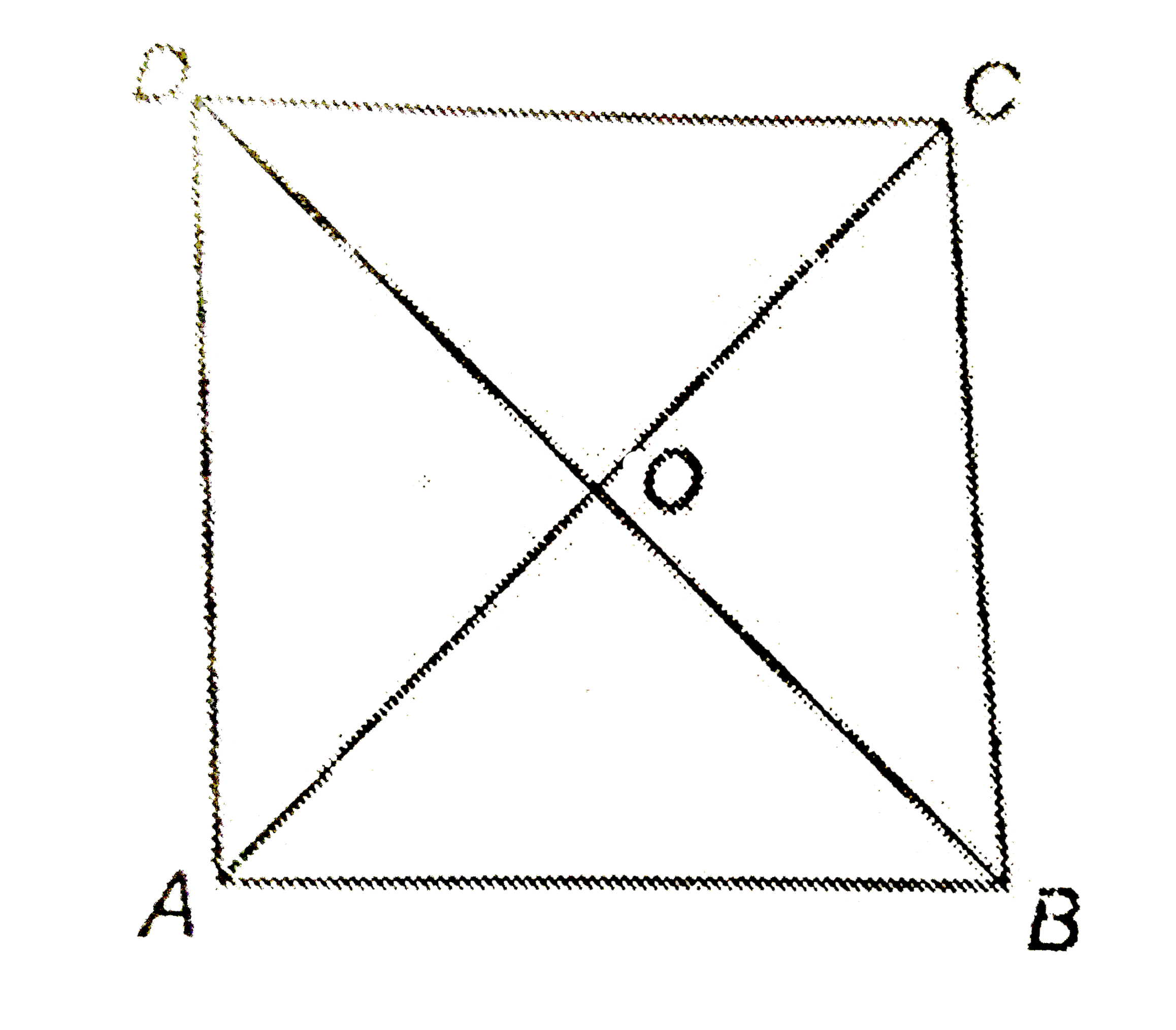If the diagonal BD of a quadrillateral ABCD bisects both ∠Band∠D. Prove that ABBC=ADCD.
To prove that ABBC=ADCD given that the diagonal BD of quadrilateral ABCD bisects both ∠B and ∠D, we can follow these steps:
Step 1: Identify the triangles
Consider triangles ABC and ADC where BD is the diagonal that bisects the angles at B and D.
Step 2: Apply the Angle Bisector Theorem in Triangle ABC
Since BD bisects ∠B, by the Angle Bisector Theorem, we have:
ABBC=AOOC(1)
where O is the point where BD intersects AC.
Step 3: Apply the Angle Bisector Theorem in Triangle ADC
Similarly, since BD bisects ∠D, we can apply the Angle Bisector Theorem in triangle ADC:
ADCD=AOOC(2)
Step 4: Equate the two ratios
From equations (1) and (2), we have:
ABBC=AOOCandADCD=AOOC
Since both expressions equal AOOC, we can conclude:
ABBC=ADCD
Conclusion
Thus, we have proved that:
ABBC=ADCD
---
Consider triangles ABC and ADC where BD is the diagonal that bisects the angles at B and D.
Since BD bisects ∠B, by the Angle Bisector Theorem, we have:
ABBC=AOOC(1)
where O is the point where BD intersects AC.
Similarly, since BD bisects ∠D, we can apply the Angle Bisector Theorem in triangle ADC:
ADCD=AOOC(2)
From equations (1) and (2), we have:
ABBC=AOOCandADCD=AOOC
Since both expressions equal AOOC, we can conclude:
ABBC=ADCD
Thus, we have proved that:
ABBC=ADCD
Topper's Solved these Questions
- TRIANGLES BOOK - NAGEEN PRAKASHAN ENGLISHCHAPTER - TRIANGLES EXERCISE - Eercise 6b
1 Videos
- TRIANGLES BOOK - NAGEEN PRAKASHAN ENGLISHCHAPTER - TRIANGLES EXERCISE - Exercise 6b
29 Videos
- TRIANGLES BOOK - NAGEEN PRAKASHAN ENGLISHCHAPTER - TRIANGLES EXERCISE - Problems From NCERT/ Exemplar
14 Videos
- STATISTICS BOOK - NAGEEN PRAKASHAN ENGLISHCHAPTER - STATISTICS EXERCISE - Revision Exercise Long Answer Questions
4 Videos
- VOLUME AND SURFACE AREA OF SOLIDSBOOK - NAGEEN PRAKASHAN ENGLISHCHAPTER - VOLUME AND SURFACE AREA OF SOLIDSEXERCISE - Revisions Exercise Long Answer Questions
5 Videos
Similar Questions
The diagonal BD of a parallelogram ABCD bisects angles B and D. Prove that ABCD is a rhombus.
View SolutionIn Figure, diagonal AC of a quadrilateral ABCD bisects the angles A and C . Prove that AB=AD and CB=CD.
View SolutionIn a quadrilateral ABCD, AB = CD and ∠B=∠C. Prove that
AC=AB
View SolutionIn the adjoining figure, the diagonals AC and BD of a quadrilateral ABCD intersect point O. Prove that :
AB+BC+CD+DA<2(AC+BD)

View SolutionDiagonals of a quadrilateral ABCD bisect each other. If ∠A=35∘, determine ∠B.
View SolutionThe diagonal AC of a quadrilateral ABCD divides it into two triangles of equal areas. Prove that diagonal AC bisects the diagonal BD.
View SolutionIn a quadrilateral ABCD, ∠A+∠D=90∘. Prove that
AC2+BD2=AD2+BC2
View SolutionIn a quadrilateral ABCD, ∠B=90∘and∠D=90∘. Prove that :
2AC2−AB2=BC2+CD2+DA2
View SolutionIn a quadrilateral ABCD, AB = CD and ∠B=∠C. Prove that
AD is parallel to BC.
View SolutionIf the sides of a quadrilateral ABCD touch a circle prove that
AB+CD=BC+AD.
View Solution
